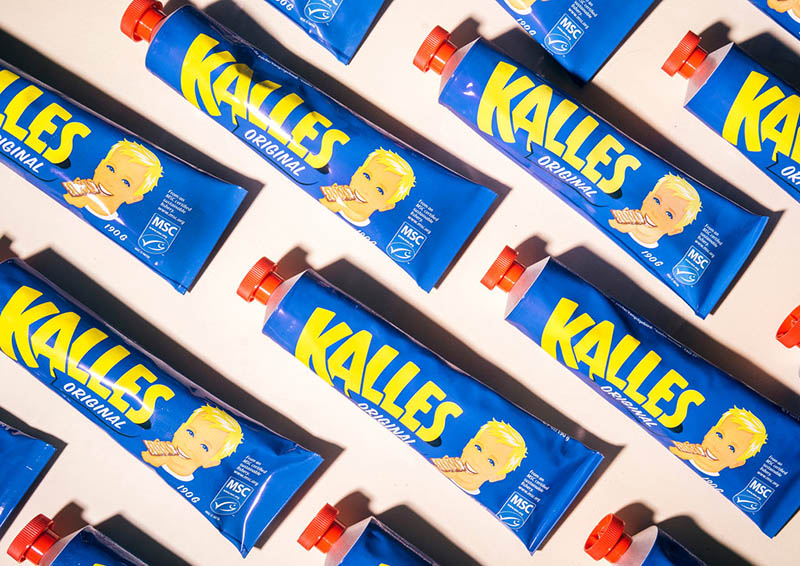Tiny Birds, Big Drama: Inside the World of the Birdmen of Queens
Emily S. Rueb in The New York Times:
Mr. Harinarain, a heating and air-conditioner repairman from Brooklyn, joined a procession of middle-aged men in fedoras and flat caps, cradling wood poles and cages the size of large shoe boxes, streaming into a pocket-size park in Richmond Hill, Queens, on a recent Sunday morning. The cages were blanketed in white coverlets, some trimmed with lace. Inside each one was a delicate songbird: a chestnut-bellied seed finch native to the northern parts of South America and the Caribbean.
Sundays are race days, though the events are not really races but speed-singing contests. Two cages each containing a male finch, whose fierce calls are triggered by an instinctive desire to woo females and defend turf, are hung on a pole about an inch apart.
My school just got a ton of new iMacs...this is what they did with the boxes.
studercinema at reddit:
My favorite comment:
Typical, Apple is always trying to reinvent the wheel.
One City Tried Something Radical to Stop Gun Violence. This Report Suggests It’s Working.
Tim Murphy in Mother Jones:
In late 2007, Boggan launched the Office of Neighborhood Safety, an experimental public-private partnership that’s introduced the “Richmond model” for rolling back street violence. It has done it with a mix of data mining and mentoring, and by crossing lines that other anti-crime initiatives have only tiptoed around. Four times a year, the program’s street team sifts through police records and its own intelligence to determine, with actuarial detachment, the 50 people in Richmond most likely to shoot someone and to be shot themselves. ONS tracks them and approaches the most lethal (and vulnerable) on the list, offering them a spot in a program that includes a stipend to turn their lives around.
Ironsides
IRONSIDES is an authoritative/recursive DNS server pair that is provably invulnerable to many of the problems that plague other servers. It achieves this property through the use of formal methods in its design, in particular the language Ada and the SPARK formal methods tool set. Code validated in this way is provably exception-free, contains no data flow errors, and terminates only in the ways that its programmers explicitly say that it can. These are very desirable properties from a computer security perspective.
The Ada-Europe 2013 paper (pdf) is pretty readable.
A Clinton Story Fraught With Inaccuracies: How It Happened and What Next?
The story certainly seemed like a blockbuster: A criminal investigation of Hillary Rodham Clinton by the Justice Department was being sought by two federal inspectors general over her email practices while secretary of state.
It’s hard to imagine a much more significant political story at this moment, given that she is the leading candidate for the Democratic nomination for president.
The story – a Times exclusive — appeared high on the home page and the mobile app late Thursday and on Friday and then was displayed with a three-column headline on the front page in Friday’s paper. The online headline read “Criminal Inquiry Sought in Hillary Clinton’s Use of Email,” very similar to the one in print.
But aspects of it began to unravel soon after it first went online.
Film Forum - The Quay Brothers – On 35mm
In NYC, at the Film Forum.
American identical twins working in London, stop motion animators Stephen and Timothy Quay (born 1947 in Norristown, Pennsylvania) find their inspiration in Eastern European literature and classical music and art, their work distinguished by its dark humor and an uncanny feeling for color and texture. Masters of miniaturization, they turn their tiny sets into unforgettable worlds suggestive of long-repressed childhood dreams.
Tree of 40 Fruit
The Tree of 40 Fruit is an ongoing series of hybridized fruit trees by contemporary artist Sam Van Aken. Each unique Tree of 40 Fruit grows over forty different types of stone fruit including peaches, plums, apricots, nectarines, cherries, and almonds. Sculpted through the process of grafting, the Tree of 40 Fruit blossom in variegated tones of pink, crimson and white in spring, and in summer bear a multitude of fruit.
Roughly 100 Fantastic Magazine Articles from 2014
Conor Friedersdorf at The Atlantic:
Each year, I keep a running list of exceptional nonfiction that I encounter as I publish The Best of Journalism, an email newsletter that I send out once or twice a week. This is my annual attempt to bring some of those stories to a wider audience.
Some recomendations: How Much My Novel Cost Me
How YouTube and Internet Journalism Destroyed Tom Cruise, Our Last Real Movie Star
How often do ethics professors call their mothers?
“Cheeseburger ethics”
Eric Schwitzgebel at Aeon:
Shouldn’t regularly thinking about ethics have some sort of influence on one’s own behaviour? Doesn’t it seem that it would?
To my surprise, few professional ethicists seem to have given the question much thought. They’ll toss out responses that strike me as flip or are easily rebutted, and then they’ll have little to add when asked to clarify. They’ll say that academic ethics is all about abstract problems and bizarre puzzle cases, with no bearing on day-to-day life – a claim easily shown to be false by a few examples: Aristotle on virtue, Kant on lying, Singer on charitable donation. They’ll say: ‘What, do you expect epistemologists to have more knowledge? Do you expect doctors to be less likely to smoke?’ I’ll reply that the empirical evidence does suggest that doctors are less likely to smoke than non-doctors of similar social and economic background. Maybe epistemologists don’t have more knowledge, but I’d hope that specialists in feminism would exhibit less sexist behaviour – and if they didn’t, that would be an interesting finding. I’ll suggest that relationships between professional specialisation and personal life might play out differently for different cases.
It seems odd to me that our profession has so little to say about this matter. We criticise Martin Heidegger for his Nazism, and we wonder how deeply connected his Nazism was to his other philosophical views. But we don’t feel the need to turn the mirror on ourselves.
In most cases, we already know what is good. No special effort or skill is required to figure that out. Much more interesting and practical is the question of how far short of the ideal we are comfortable being.
The Misleading War on GMOs: The Food Is Safe. The Rhetoric Is Dangerous.
Anyone paying attention knows this already, but here is an absolutely brutal article calling them out in detail.
William Saletan at Slate:
The war against genetically modified organisms is full of fearmongering, errors, and fraud. Labeling them will not make you safer.
Marijuana dispensaries save lives, new study shows
Eric Levitz at MSNBC:
The United States has a problem with painkillers. During the past 15 years, America has seen a tremendous growth in both the sales of prescription opiates and the number of people who die each year from abusing them. More than 16,000 people fatally overdosed on prescription painkillers in 2013, accounting for 60% of all overdose deaths, according to the Center for Disease Control. But a new study suggests that some states have already stumbled onto a means of curbing this fatal epidemic: Easily-accessible marijuana.
The House That Saved Their Marriage
Nancy Keates in the Wall Street Journal, use the Archive.is link to bypass paywall:
Allison Paschke, an artist, and John Danskin, a computer engineer, needed some space from each other. The couple, who had been married for more than two decades and raised two kids, found themselves squabbling over lots of small things, but they didn’t want to get divorced. So in 2006, they sold their three-story house in Cranston, R.I., and bought a 4,300-square-foot loft in the old jewelry district of downtown Providence for $600,000. Then they went about dividing the loft into two connected but utterly distinct living areas, each with its own bedroom, kitchen, dining area and workspace.
A Swedish Ad Campaign, for Kalles Kaviar, Tests the World’s Gag Reflex
Cecilia Sajland, marketing manager for Kalles, said, “We wanted to show other nationalities’ incomprehension when it comes to very Swedish tastes like Kalles,” adding, “We wanted Swedes to feel unique and proud of the brand and the taste.”
How Jaques Pepin Saved My Life
Brett Martin in GQ:
And there was no easy definition for what Pépin had become for me. He was not my father, certainly, nor a friend, nor even a mentor. “Role models” were for college essays, not grown men. Any of those relationships would have been recognizable, with its own protocol for behavior and for expressing gratitude. But Pépin and I had met only glancingly, at a moment that had obviously meant vastly more to me than it had to him, itself something hard to admit. I had learned, over time, that I was not alone. Many other men had had similar experiences—even equally surreal ones. Not enough of them had ever said thanks.
Mills, Hood and FM Synthesis as a Metaphor
Recently while preparing a lecture on the influence of gear on music I puzzled over the formal differences between Chicago’s house and Detroit’s techno. Both owed a lot to the restrictions inherent in Roland’s rigid TR-808 and TR-909 drum machines and the absence of a budget for much more of a set-up. There are so many commonalities that I wondered what the general differences really are. And I don’t seem to be the only one confused. Reportedly, Derrick May thought they were doing house music – until Juan Atkins insisted on the techno tag, which he in turn had borrowed from Alvin Toffler. Researching gear lists, I eventually stumbled upon a device named DX100. It was used by virtually every Detroit producer (including Derrick May: somebody said Nude Photo employs the “Wood Piano” preset) and there were periods where it was the only other sound source in the set-ups of Jeff Mills and fellow minimalist Robert Hood, aside from a TR-909 drum machine. Core lessons learned while adapting to FM have been applied to other synthesizer (and synthesis) models later, shifting the focus of programming from the keyboard-derived approaches of 1970s art rock and fusion to the synthesizer’s modulation matrix.
Love this:
FM taken as a metaphor hints at the problem that in a perception-based production scenario (such as techno’s paradigmatic mode of operation) all parameters are effectively bundled and thus exist in a state of permanent dynamic cross-modulation. Each layer is modulated by all others, mirroring the others, imprinting contours onto each other. Everything is melting into a convoluted perceptual entity where the products of cross-modulation form their own emergent aesthetic layer. No doubt that the stark patterns have obvious rhythmic values, but all the time these also carry other information that wouldn’t exist without a carrier for it to be projected on. Although individual parameters (such as rhythm, pitch or compression ratio) can be described in isolation, such descriptions fail to identify the corresponding functions of their values and movements in context, i.e. their cross-modulated products are missing from the description. The exactly same movement of one parameter may “mean” totally different things in different contexts. One might also recall that outside of scores and measurements, i.e. while listening, we actually never encounter parameters in isolation (no pitch without timbre, no rhythm without duration …): there is no such thing as an independent variable.


